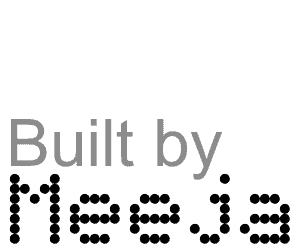The Isle of Wight Creative Network (IWCN) held its inaugural Creative Industries Conference on 3rd October 2024, marking a significant moment for the Island’s creative sector. The event, held at Building 41 on the outskirts of Cowes, brought together more than 60 in-person attendees, with many more joining via a live stream to engage with discussions on the future of creative industries.
The conference was organised by Creative Island’s Deputy Director and IWCN lead, Georgia Newman, who opened the event by acknowledging the support from Arts Fundraising and Philanthropy. This organisation plays a key role in enhancing the fundraising abilities of arts, cultural, and heritage institutions, making the conference possible.
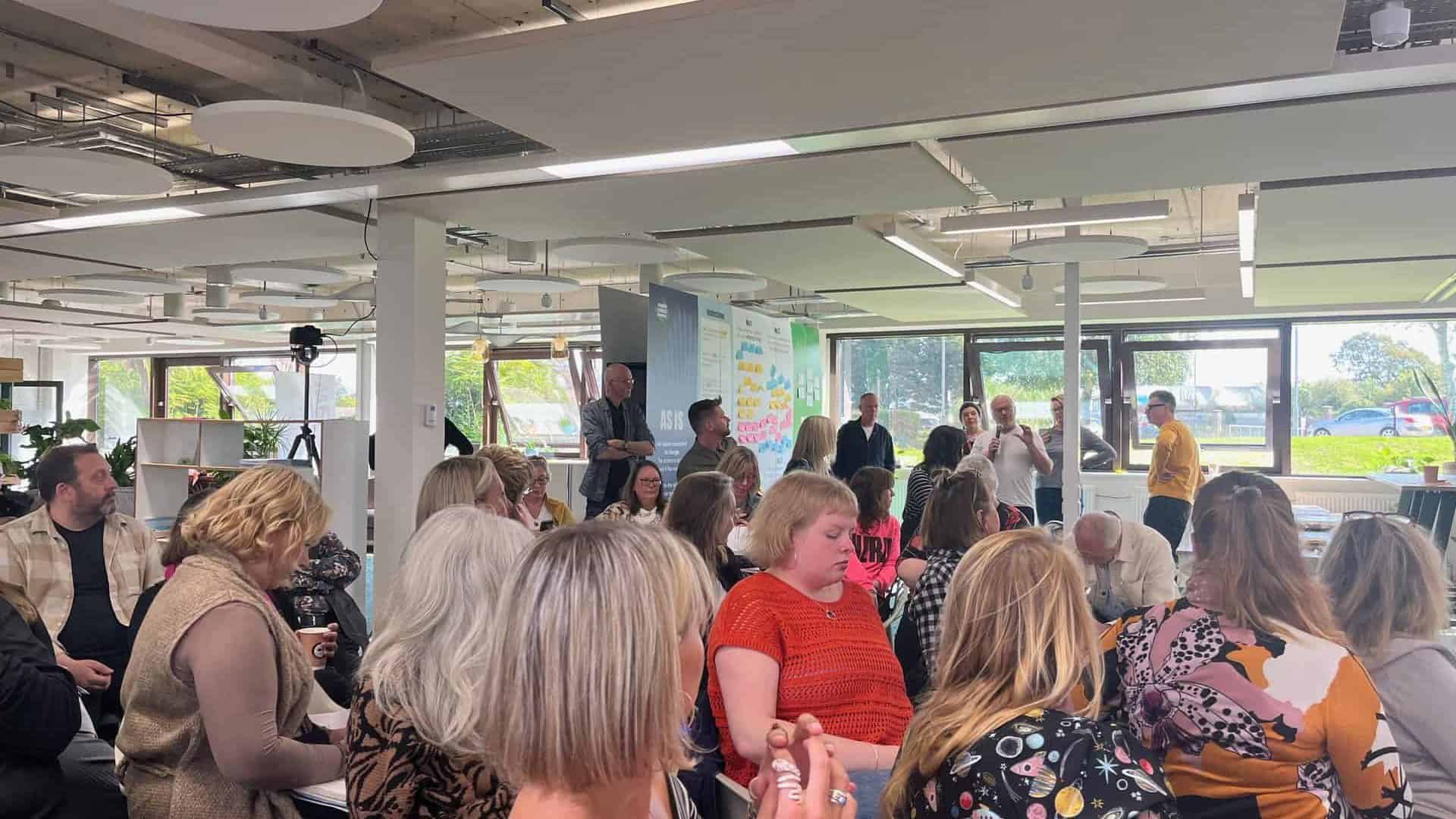
Exploring enterprise and sustainability
The morning session featured a series of provocative talks and inspiring stories from industry leaders including ecologist Ian Boyd (see in more detail below) and Rosie Wolfenden MBE, co-founder of globally successful jewellery brand, Tatty Devine.
Rosie Wolfenden gave an inspirational talk about her journey, beginning with her upbringing on the Isle of Wight, and the pivotal moment when she met her future business partner at Chelsea School of Art. What followed was a whirlwind 25 years, blending creativity with entrepreneurship. From starting with a market stall to securing a concession in Selfridges and eventually opening a chain of shops, Tatty Devine’s success wasn’t simply a case of being in the right place at the right time. Rosie emphasised that they made things happen through persistence and innovation.
She explained that the company’s ethos is about inclusivity and empowering self-expression.
“We make things that don’t exist, so that people can express themselves in a way they wouldn’t be able to otherwise.”
With high-profile collaborations with the likes of Cindy Sherman, Pulp, Jeremy Deller and the Frida Kahlo Foundation, Tatty Devine has undoubtedly secured a place in the creative vocabulary worldwide.
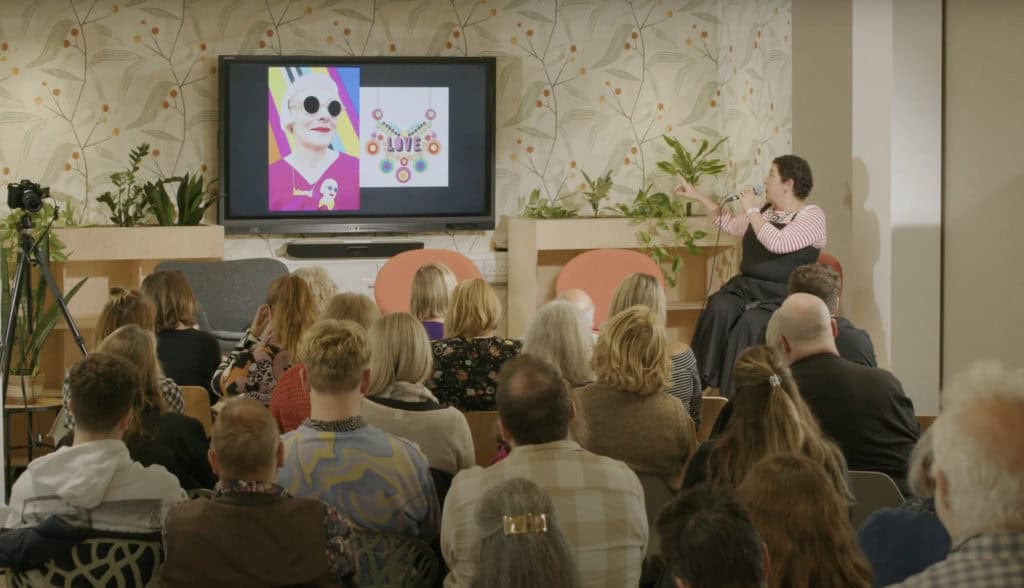
Innovation as a catalyst for transformation
After two thought-provoking talks, attendees joined breakout workshops led by Lorraine Jones and Dawn Odoi from Creative Catalyst Innovation. The facilitators discussed their backgrounds before introducing concepts of ‘disruptive innovation’ and positive storytelling. They reminded the audience that while skills remain constant, it’s essential to adapt them to future challenges. As one speaker put it, “Make sure you are the salmon swimming upstream.”
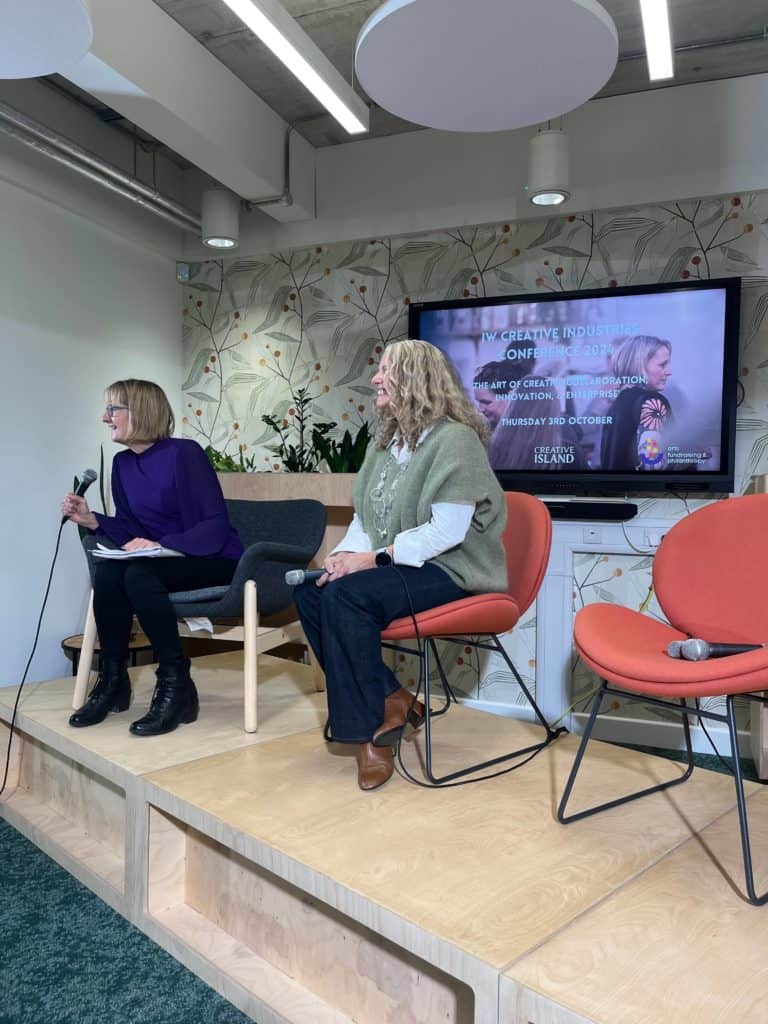
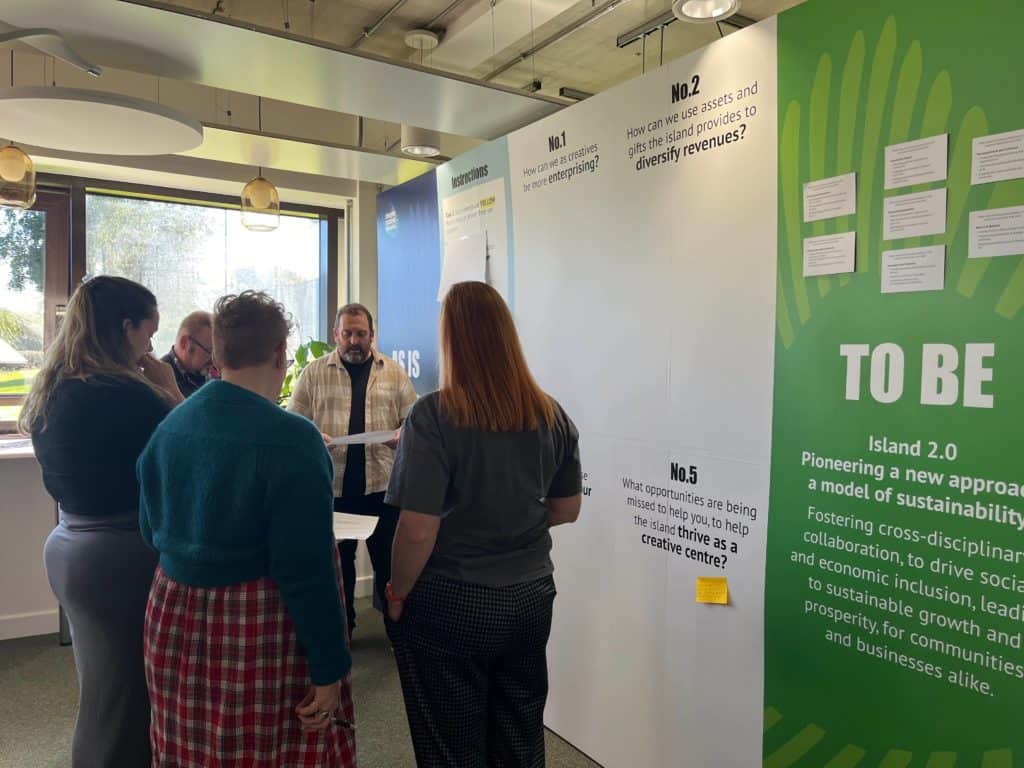
The breakout workshops explored crucial topics such as enterprise, economy, technology and sustainable business models. These sessions offered valuable insights into how creatives can adapt to a rapidly changing landscape, while maintaining ethical and sustainable practices.
Lunch provided an opportunity for attendees to network and exchange ideas in a lively atmosphere. Many seized the chance to discuss the morning’s sessions and connect with fellow creatives, fostering a sense of community and collaboration across the Island’s artistic and cultural sectors.
Inspiring words from local leaders
As the afternoon session kicked off, Julie Jones-Evans, the Isle of Wight Council’s Cabinet Member for Economy, Regeneration, Culture, and Leisure, delivered an impassioned speech. Her remarks focused on the importance of the creative industries to the local economy and how the Island can continue to cultivate its cultural and creative resources.

She thanked the Island’s creatives for
“Telling our Island story every day. Keep expressing and pushing boundaries, without it we can’t grow as a collective”
Ottilie Richardson from Building 41 announced the launch of the new B41 Creative initiative, an exciting project aimed at providing further support and opportunities for local creatives.
Engaging panel discussion and Q&A
The afternoon concluded with a panel discussion chaired by visual artist Alys Scott Hawkins. The panel featured Rosie Wolfenden, theatre-maker Joe Plumb, and visual artist Jan Frith. The discussion delved into the challenges and opportunities facing the creative sector, with each panellist bringing their unique perspective to the conversation.
The session wrapped up with an lively Q&A, giving attendees the chance to ask questions and share their thoughts.
The audience’s engagement reflected the energy and curiosity that permeated the entire day.
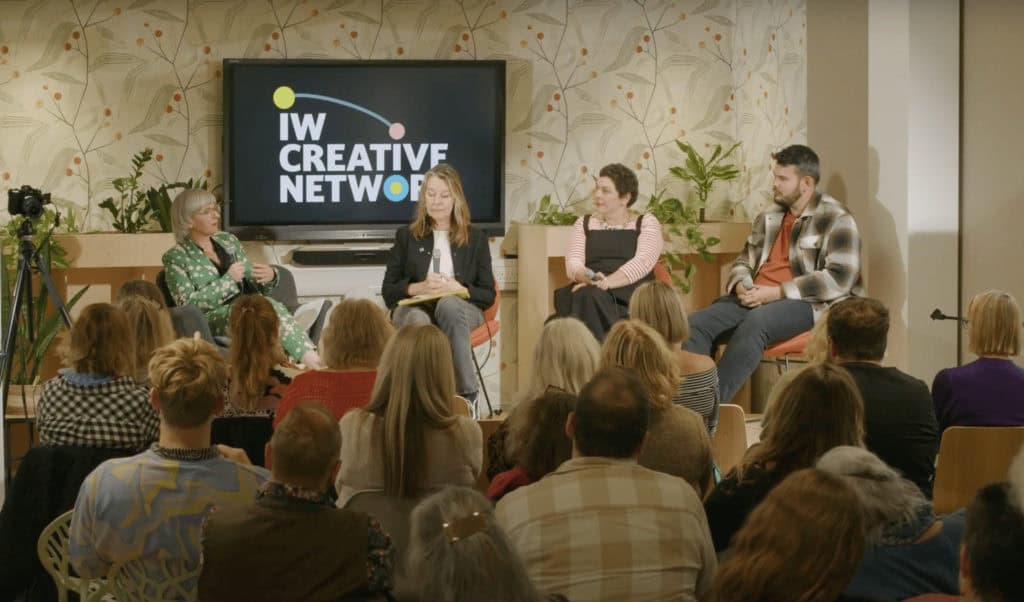
121 mentoring sessions
121 mentoring sessions were also available at the end of the day, offering attendees the opportunity to receive tailored advice and guidance from industry experts.
These sessions allowed individuals to discuss their creative businesses, seek funding advice, and explore specific challenges they were facing in a more intimate setting.
A positive impact
The inaugural Creative Industries Conference proved to be a resounding success, with much to take away from the day’s activities. For those who were unable to attend in person or watch the live stream, the entire event is available to view on the IWCN YouTube channel, ensuring that the insights and discussions continue to reach a wide audience.
Isle of Wight photographer and artist, Zoe Barker, said,
“Finding yourself in a room full of like minded creatives is so inspiring. This event created the perfect environment for networking with all the potential for collaboration that comes with that. IW Creative Network brought together a brilliant panel of speakers whose insights and professionalism couldn’t fail to inform and inspire. I’m looking forward to the next IW Creative Network event already.”
Equally, Isle of Wight playwright and actor, Rob Thompson, added,
“Bringing like minded creative people together in one space to think about the future and vision of our Island’s economy and culture is a powerful thing.
“We all continue to grow and build our networks and this forging of creative people, creators, entrepreneurs, academics and visionaries is seeding the future success of The Island. “
Jasmine Truman, a young photographer and artist who has just graduated from University of Bristol, took much from the day. She said,
“The IW Creative Network conference was a wonderful opportunity for me to connect with other local creatives, learn about new initiatives and have important conversations about the future of the creative industry here on the Island.
“As a young creative, the Island can be a challenging and often isolating place, and so, events like this are unbelievably important in uniting the brilliant people in our Island’s creative sphere and in fostering hope and new ideas for a better future.”
Artist Jan Frith, who took part in the afternoon panel discussion, added,
“I feel deeply connected to the Creative Island ecosystem and that we are all rowing well together with a magical kind of synchronicity.
“So many brilliant initiatives are happening and this conference from the immensely valuable IWCN was a fine example of innovative minded creative collaboration. I feel very encouraged for the future of living and working here.”
Provocation: Creativity is not enough
Ian Boyd, widely respected for his dedication to environmental conservation and deep understanding of the Island’s wildlife and habitats, delivered a provocative speech, encouraging creatives to rethink their approach. Speaking to a room full of artists and innovators, Ian presented a thought-provoking case for why creativity alone is not enough to drive meaningful change in today’s world.
Ian opened his presentation by explaining the title of his talk, “Creativity is not enough,” and challenged the audience to rethink how they view creativity in the context of social and environmental progress.
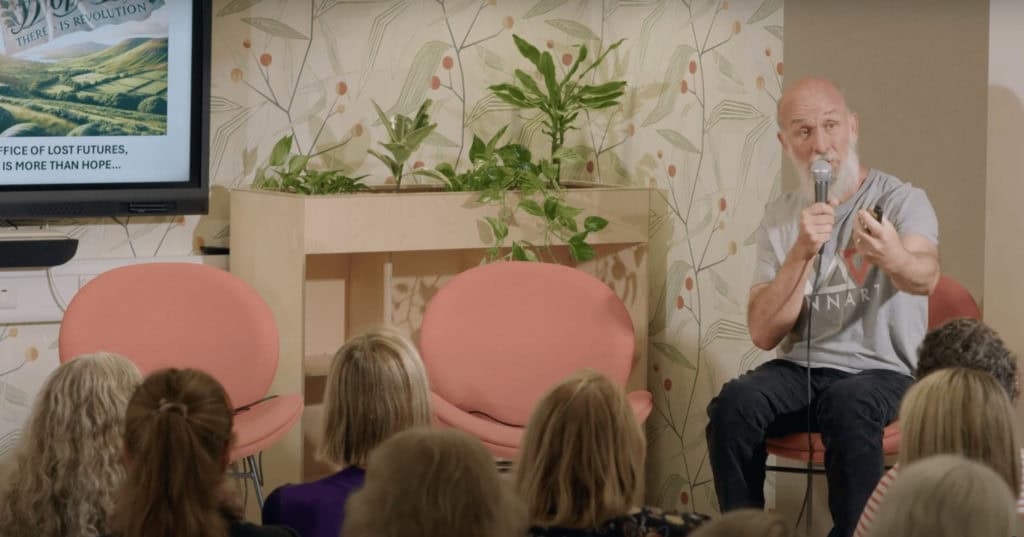
The problem with modern creativity
“If we cut creativity out of the fabric of social hope, it just becomes cultural litter,” Ian declared, drawing the audience in with this powerful image. He described how discarded ideas, stripped of their potential to inspire change, are simply swept aside, “crunchy underfoot” in studios and galleries.
Ian then delved deeper into why modern creativity often fails to spark real transformation. He argued that while creativity can be recycled, it often becomes mere ingenuity—a resource he believes the world has in abundance. “There is a massive global oversupply of ingenuity and an incredible scarcity of creativity as a raw material,” Ian noted. He described creativity as a bridge linking imagination with hopeful futures, but lamented that we have forgotten its true purpose.
“We’ve turned creativity into a beginning and an end, and we don’t visit either of the islands it is supposed to bridge,” Ian observed, underscoring the importance of using creativity to lead society toward change, rather than allowing it to stagnate as an end in itself.
The funding dilemma and ‘toxic nostalgia’
Ian went on to critique the current funding landscape for creative projects. He argued that funders, by playing it safe, perpetuate a cycle of recycling old ideas rather than fostering new, riskier innovations. “That machine is what turns creativity into ingenuity because you are required by your funder to take the last project you painted red and paint it blue,” he explained, highlighting the restrictive nature of the funding process.
Taking his provocation further, Ian accused the Island of being haunted by “toxic nostalgia,” a phrase that resonated deeply with the audience. He introduced the concept of ‘hauntology,’ a term coined by French philosopher Jacques Derrida, to describe how society remains fixated on a romanticised past. Ian described the Island’s version of this nostalgia: “The Island only looks backwards, it says things like ‘wasn’t it great when the beaches were full’.”
According to Ian, this fixation on lost opportunities is a barrier to developing a vibrant cultural and ecological future. “We’ve created this Office of Lost Futures,” Ian said, suggesting that the Island remains mired in missed possibilities because it has failed to nurture a cultural environment that can drive new ideas forward.
Revolution through Ecology and Art
Despite the heavy critique, Ian offered a message of hope. He encouraged the audience to embrace the Island’s revolutionary potential in two key areas: ecology and art. Ian believes the Island is uniquely positioned to drive systemic change by merging its ecological heritage with its creative industries. He pointed to the Island’s status as part of the UNESCO World Biosphere Reserve, which he described as a crucial intersection between ecology and culture.
“There is hope, in fact there is more than hope, there is revolution,” Ian declared. He urged creatives to seize this opportunity to foster a “new negotiated settlement between people, place and wildlife”.
The Island’s rich biodiversity and cultural distinctiveness, he argued, are powerful assets that should no longer be trivialised.
A call to action for creatives
In closing, Ian stressed that true change will require a radical shift in how the Island’s creatives approach their work. He urged them to go beyond mere ingenuity and to use their projects as tools for genuine cultural and environmental transformation.
“Change is only possible if we are radical and revolutionary in our outlook,” Ian concluded, calling on creatives to lead the charge in shaping a new future for the Island.
Ian’s presentation was met with great enthusiasm and applause from the audience, cementing his message as both challenging and inspiring.
It is a must-watch for those interested in how creativity and environmental stewardship can intersect to drive meaningful change.
Catch up
If you missed the live stream of the conference on the 3rd October, you can catch up on IW Creative Networks’s YouTube channel.
Feedback please
If you attended the live event or are watching the recording, please could you spare a few more moments to fill out this feedback form so we can keep improving our offering, thank you!





